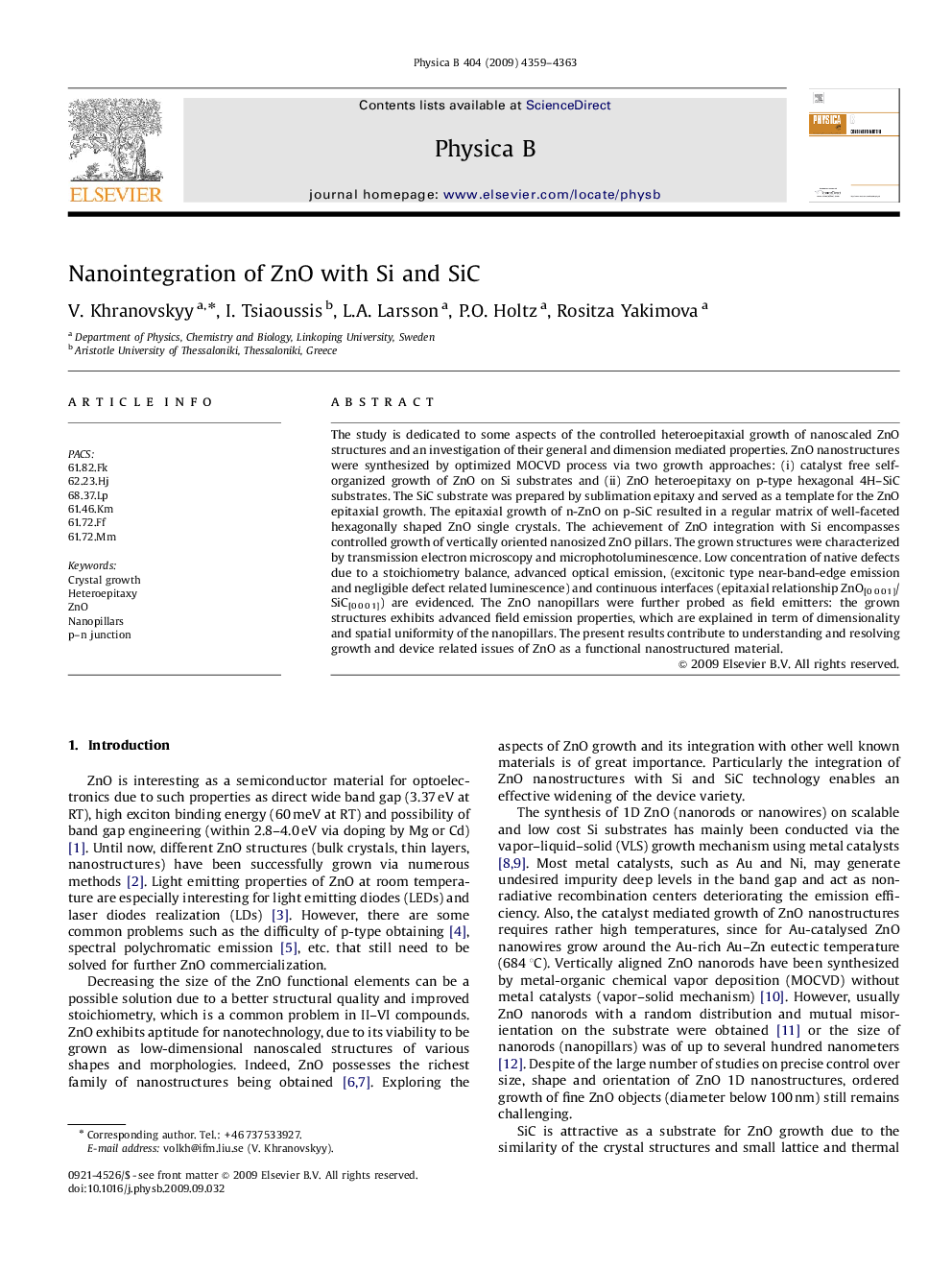| Article ID | Journal | Published Year | Pages | File Type |
|---|---|---|---|---|
| 1813402 | Physica B: Condensed Matter | 2009 | 5 Pages |
The study is dedicated to some aspects of the controlled heteroepitaxial growth of nanoscaled ZnO structures and an investigation of their general and dimension mediated properties. ZnO nanostructures were synthesized by optimized MOCVD process via two growth approaches: (i) catalyst free self-organized growth of ZnO on Si substrates and (ii) ZnO heteroepitaxy on p-type hexagonal 4H–SiC substrates. The SiC substrate was prepared by sublimation epitaxy and served as a template for the ZnO epitaxial growth. The epitaxial growth of n-ZnO on p-SiC resulted in a regular matrix of well-faceted hexagonally shaped ZnO single crystals. The achievement of ZnO integration with Si encompasses controlled growth of vertically oriented nanosized ZnO pillars. The grown structures were characterized by transmission electron microscopy and microphotoluminescence. Low concentration of native defects due to a stoichiometry balance, advanced optical emission, (excitonic type near-band-edge emission and negligible defect related luminescence) and continuous interfaces (epitaxial relationship ZnO[0 0 0 1]/SiC[0 0 0 1]) are evidenced. The ZnO nanopillars were further probed as field emitters: the grown structures exhibits advanced field emission properties, which are explained in term of dimensionality and spatial uniformity of the nanopillars. The present results contribute to understanding and resolving growth and device related issues of ZnO as a functional nanostructured material.
